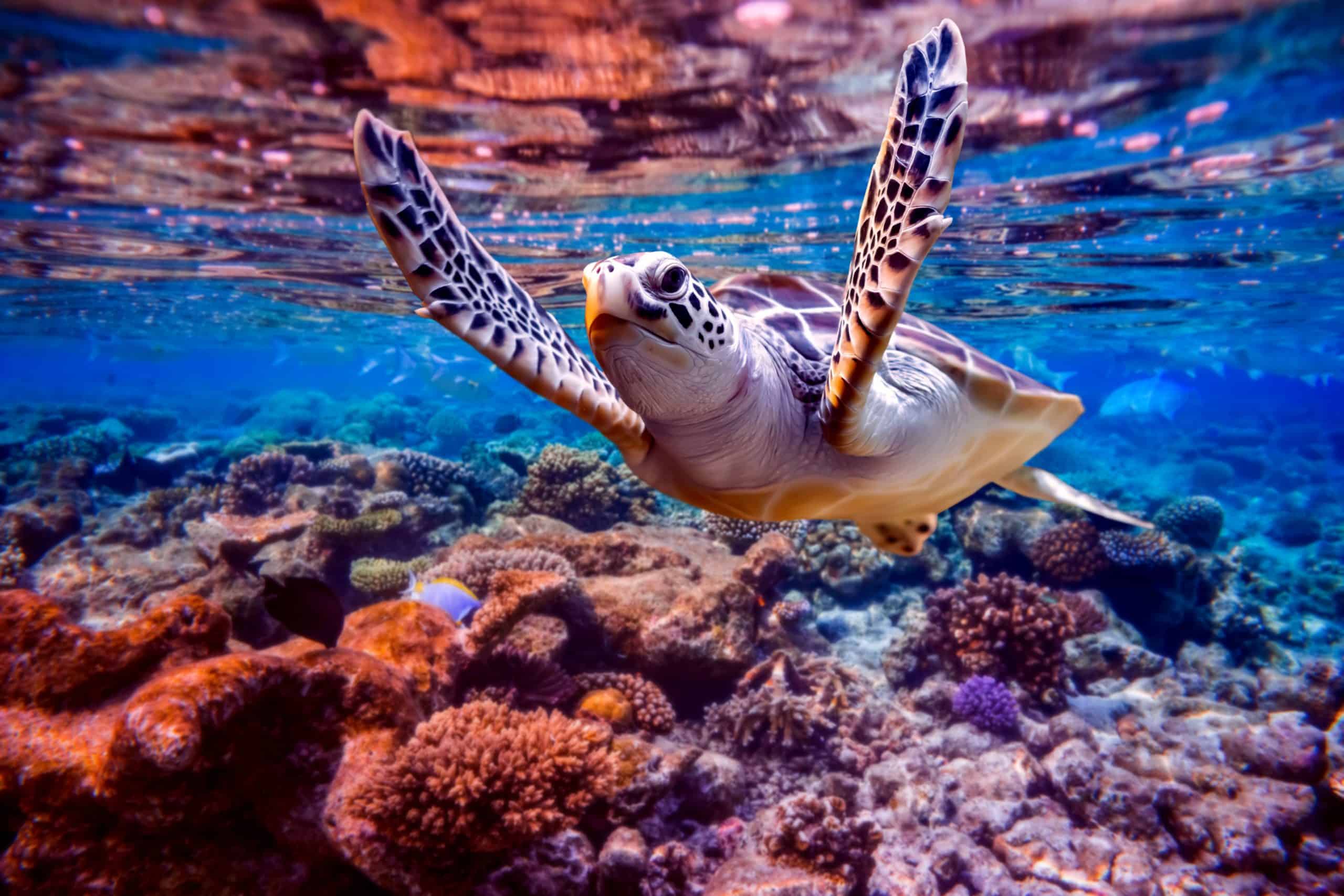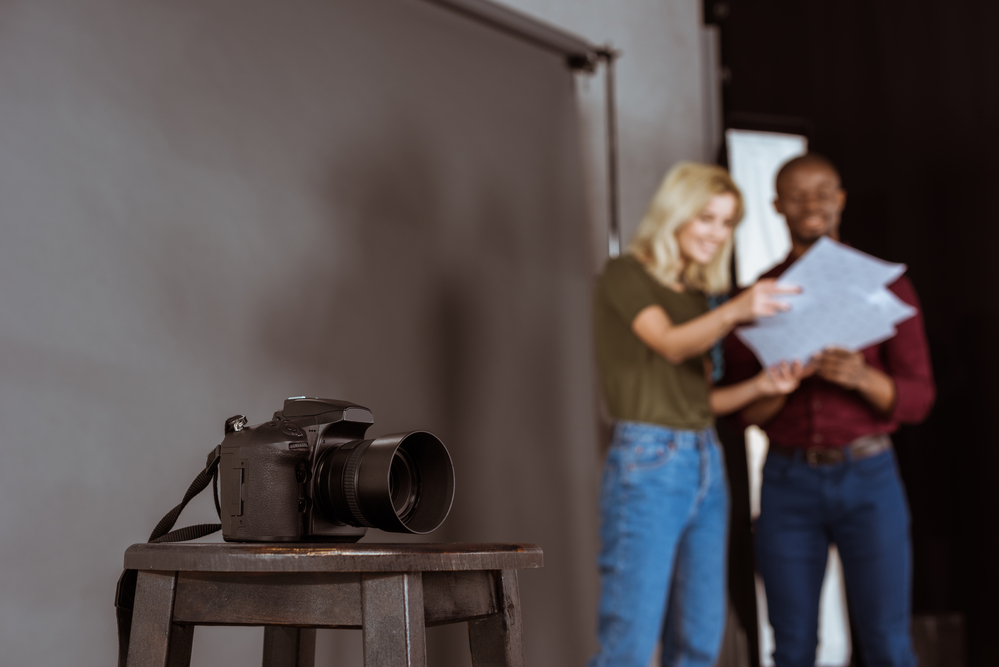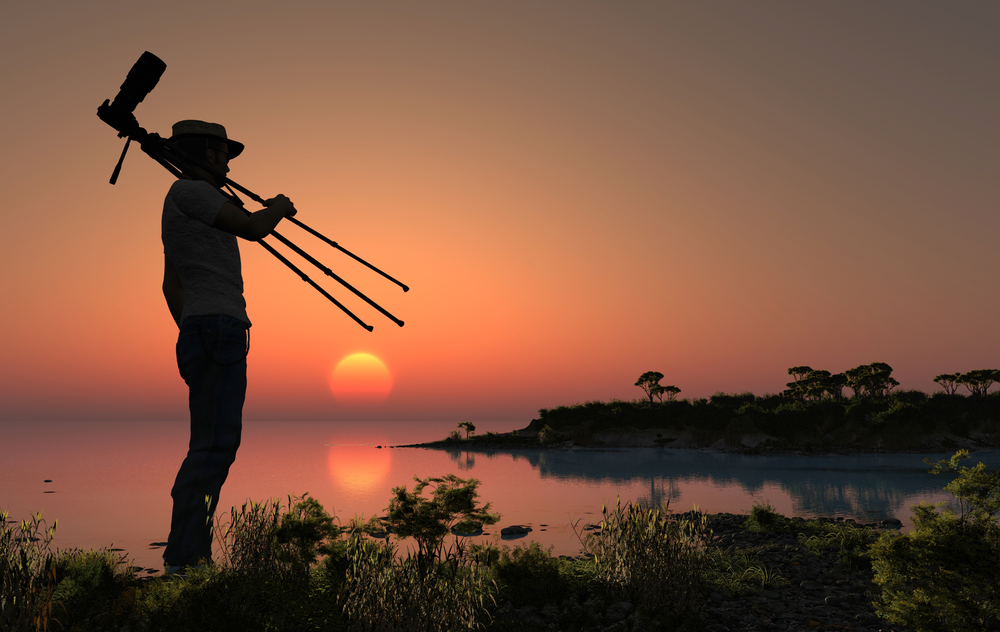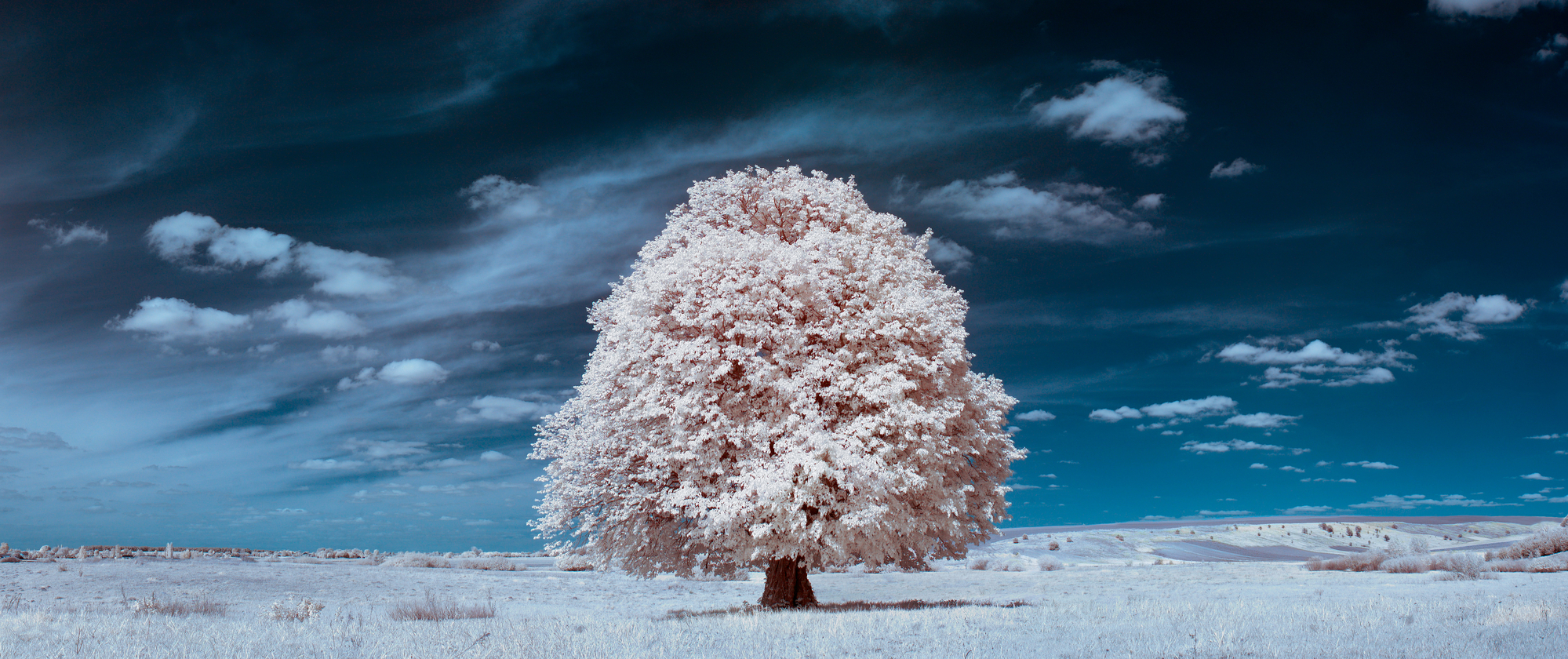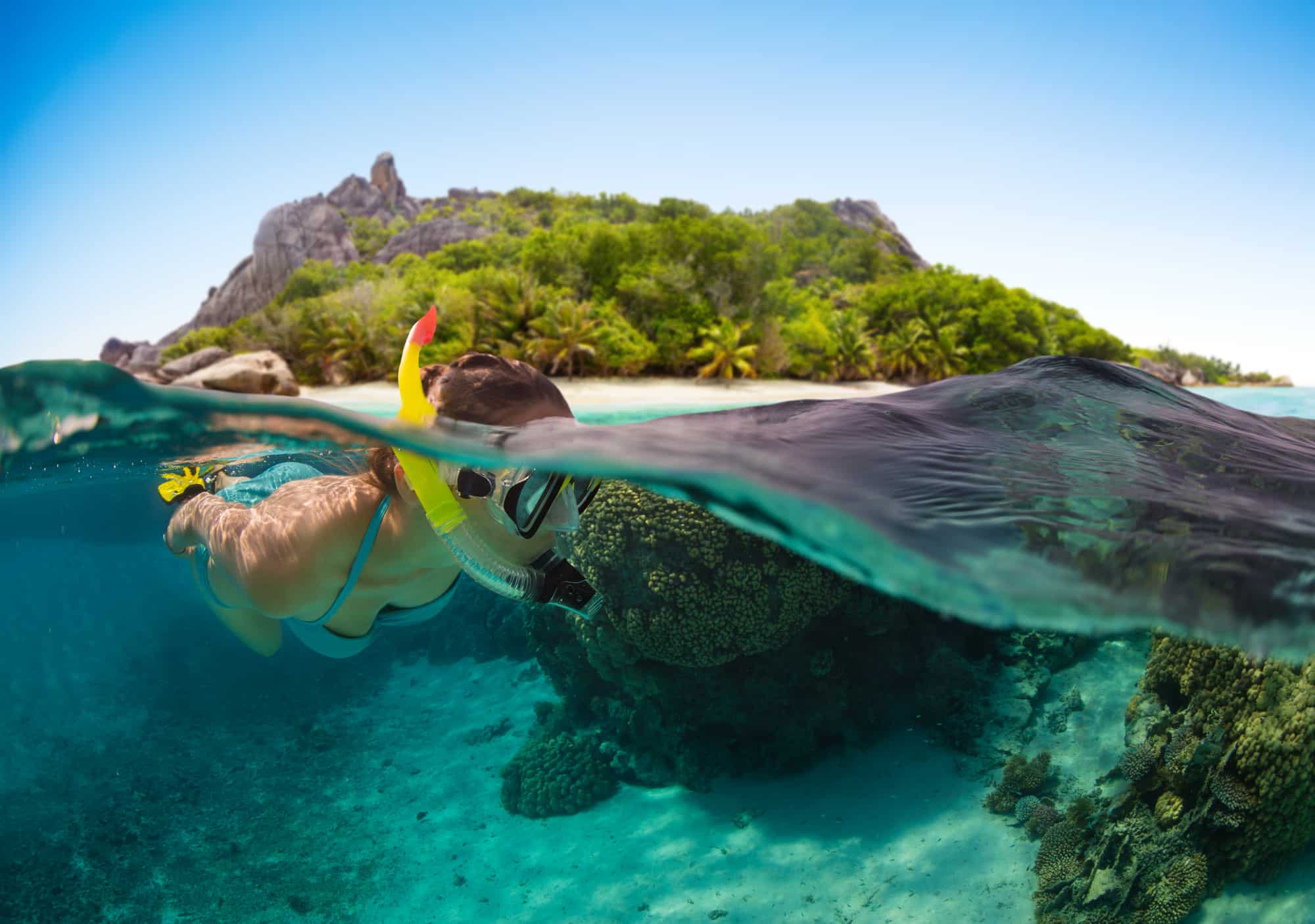What is underwater photography?
Underwater photography is about shooting objects that are underwater. Typically, this type of photography is classified as a type of nature photography, but sometimes photographers also shoot underwater portraits. There is an exception to the rule that the photographer must submerge the camera in the water to shoot underwater photography. Shooting marine life through the glass of the aquarium and split photograph (part of the image shows what is above the water, and part of the image shows what is happening underwater) is also called underwater photography.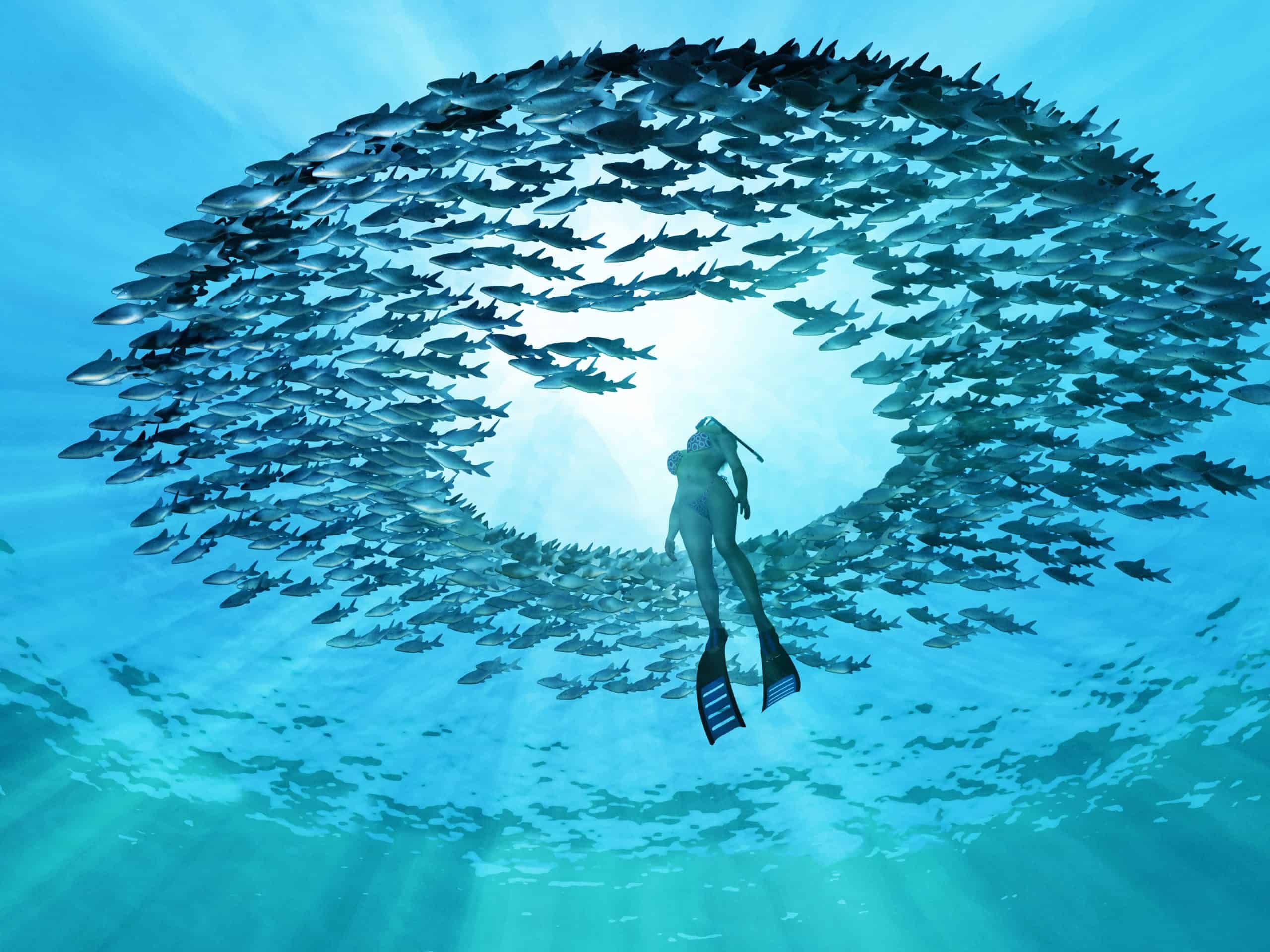 Sea (or ocean) underwater pictures are more difficult to take compared to regular photographs and there are some reasons why:
Sea (or ocean) underwater pictures are more difficult to take compared to regular photographs and there are some reasons why:
— Refractive index of saltwater
Seawater refracts light rays greatly, so objects in the water appear closer than in air. This effect narrows the angle of view (AOV) of the lens and affects the scale of the shot. For this reason, a short-throw lens is more suitable for underwater photography. However, photographers also use wide-angle lenses (macro lenses) to capture details while diving.— Poor visibility and little light
Here is the first rule from our underwater photography guide. Good lighting is essential to keep subjects in your photos clear and bright. Unfortunately, seawater is not always clear: sand, silt, and organic matter can float in it, making images ‘muddy’. Also, water allows light to pass through worse than air, so a searchlight is required at a depth of even several meters.— Visible spectrum changes
Water has different optical properties than air. It lets in the red and yellow parts of the spectrum poorly but transmits blue and green well. For this reason, photographs taken at a depth of more than three meters cannot be corrected even with digital processing. For such depths, additional lighting or a black and white matrix with a blue filter is used.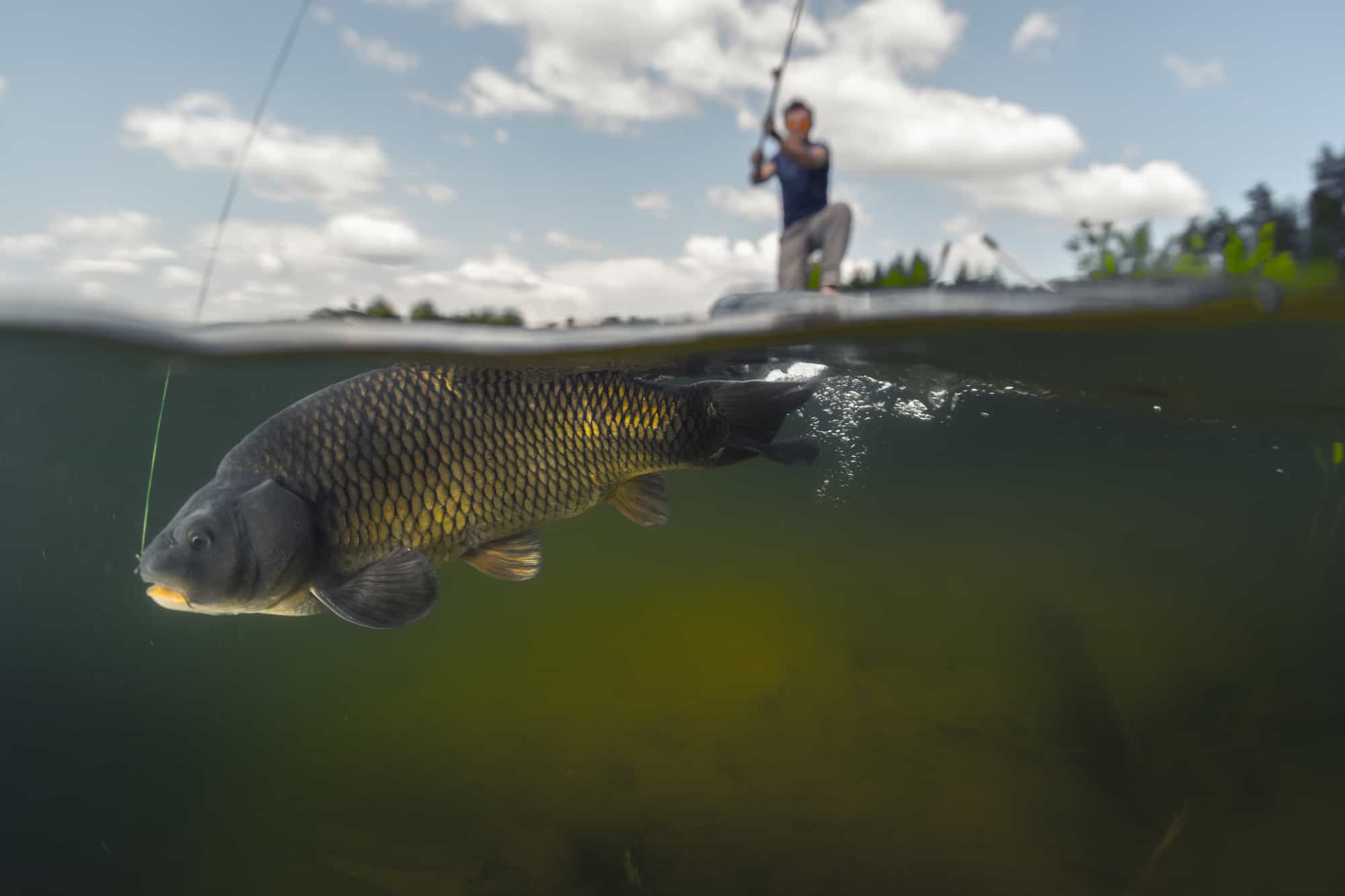
Underwater photography guide: Choosing equipment for marine shooting
The underwater photography starting kit usually includes a waterproof motion camera (GoPro is the most popular option) or a small ‘point and shoot cameras’ with a waterproof housing made of plastic or aluminum. Depending on what type of underwater image you want, you can also use a traditional professional camera with a variety of lenses (both long and short throw) by adding a lens port to them. Please note that your lens port must match your lens (sometimes they are sold with the lens). There are flat ports (for macro photography) and dome ports (for wide-angle shooting) for diving. The second option allows you to reduce water optical effects and make your underwater shots look like they were taken in usual ‘air’ conditions.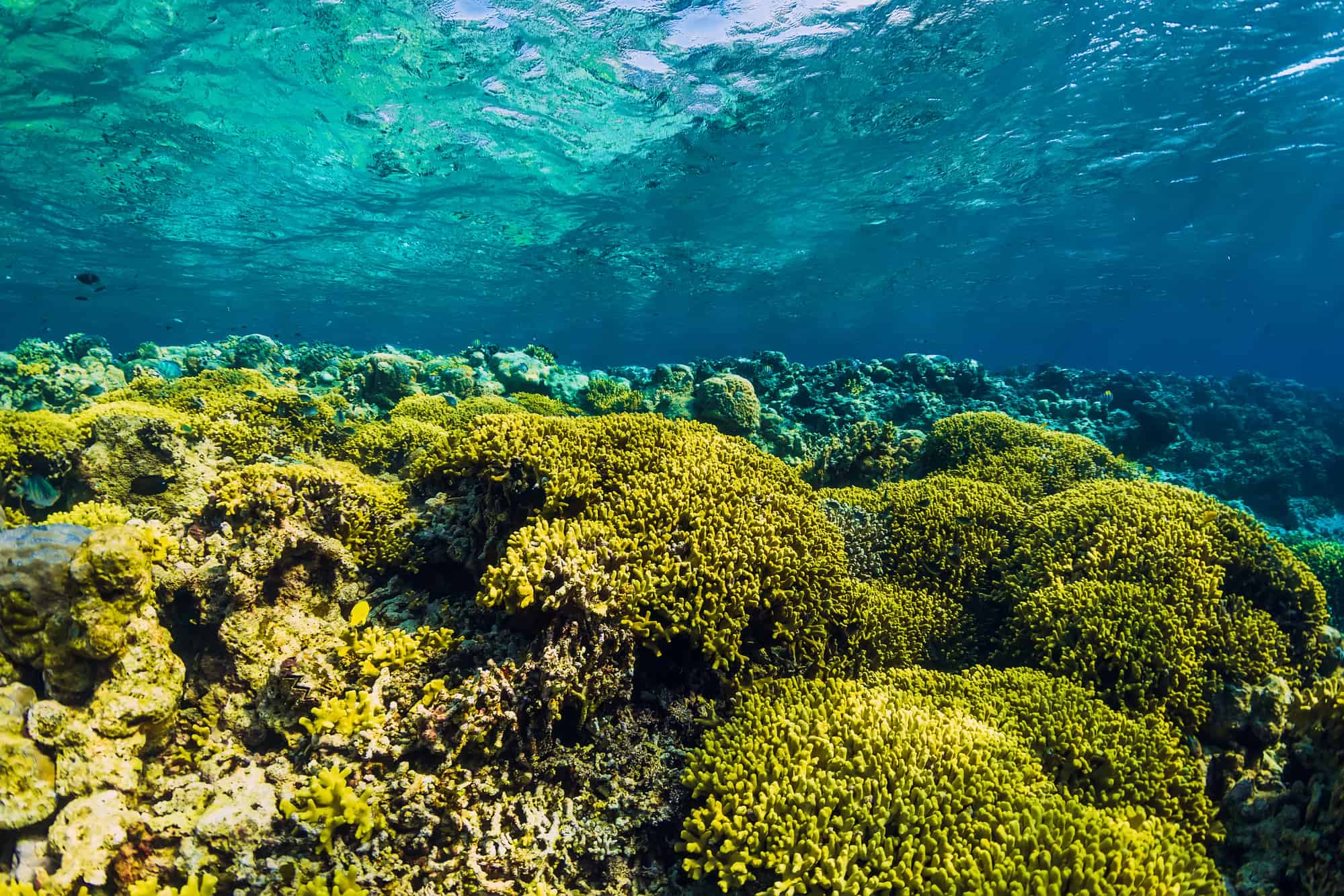 The equipment that photographers use for shooting at shallow depths (up to three meters) and great depths (three meters or more) is different. For shallow depths, a single camera-mounted light will work well, but for deepwater shots and muddy water, you need additional autonomous light and even an operator.
If you decide to shoot at a depth of 5 to 100 meters, use radio-controlled tripods, a color correction built-in filter, and an underwater light with a power control function. Some examples of lenses for taking underwater photos: any ‘fisheyes’ (angle of view up to 180 degrees, for large objects), 20mm f/1.8G, 16-35mm f/4G, 105mm f/2.8G, and 200mm f/4D.
The equipment that photographers use for shooting at shallow depths (up to three meters) and great depths (three meters or more) is different. For shallow depths, a single camera-mounted light will work well, but for deepwater shots and muddy water, you need additional autonomous light and even an operator.
If you decide to shoot at a depth of 5 to 100 meters, use radio-controlled tripods, a color correction built-in filter, and an underwater light with a power control function. Some examples of lenses for taking underwater photos: any ‘fisheyes’ (angle of view up to 180 degrees, for large objects), 20mm f/1.8G, 16-35mm f/4G, 105mm f/2.8G, and 200mm f/4D.
Tips to take a perfect underwater image
An interesting feature of underwater photography is that the photographer spends much more time getting ready for the process than shooting. For example, it can take several months to study a shooting location, select equipment, and learn how to dive to great depths. And all this to spend 10 minutes underwater with a camera in hand! Find some basic recommendations from aqua photographers below:#1 Plan your shoot carefully (lights, water clarity, time of the day, equipment)
Shooting in fresh, salt, and swimming pool water is different, and the clearest of these is saltwater over a rocky bottom. A sunny, windless day (there are minimum waves on the water surface) is best for shooting. You also need to be good at swimming, as underwater equipment is usually massive and heavy. Determine which settings you can change under the water and which need to be adjusted in advance. We advise you to do some test photo sessions to understand your underwater capabilities before trying to capture white whales passing by the sunken ship.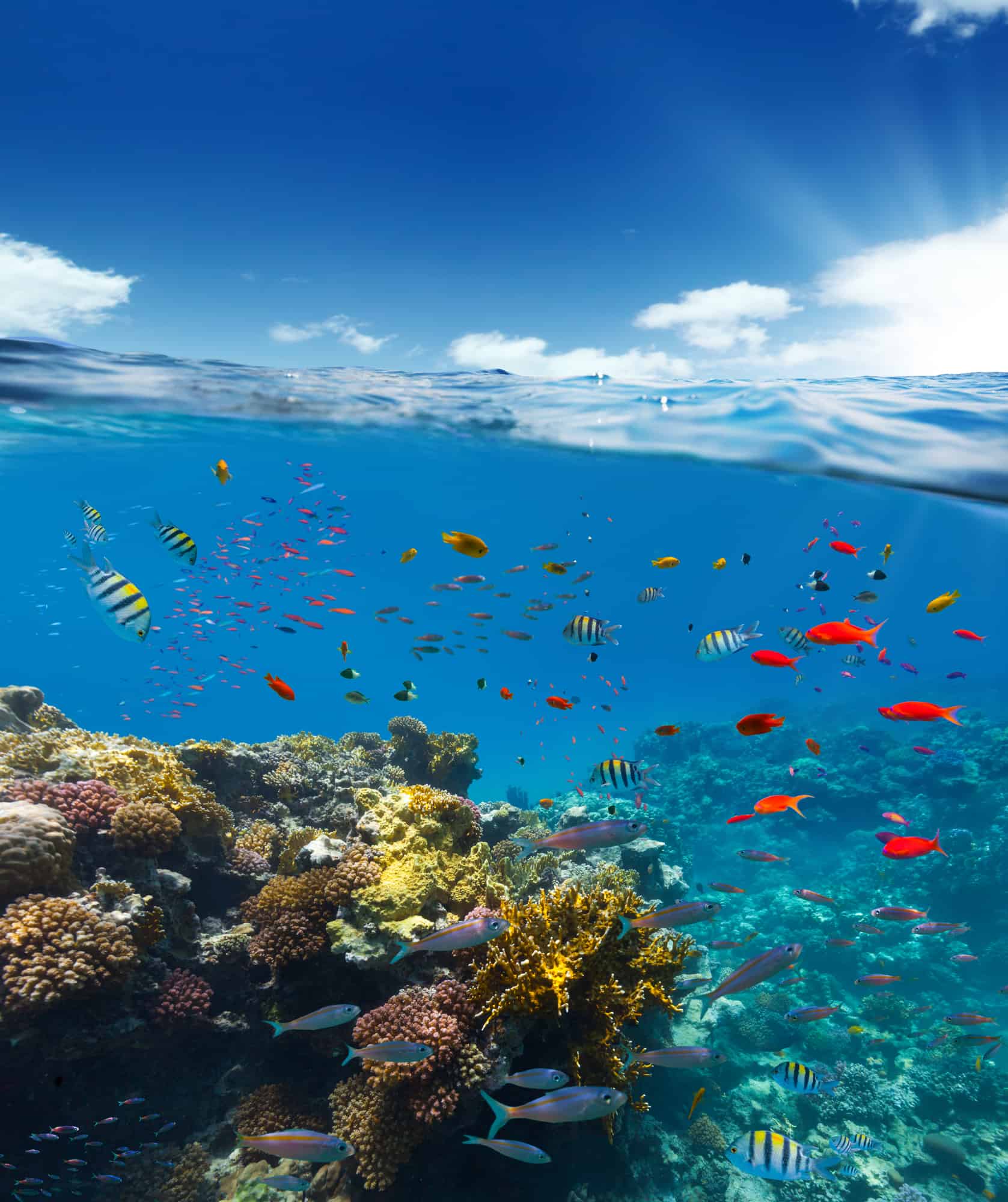
#2 Check your equipment and settings several times before diving
Any mistake might be very costly for you, especially if it is connected with the depressurization of the housing and ports. Water, sand, or dust can also enter the inside of the housing and harm your equipment. We recommend preparing photographic equipment in the following sequence:- Check your camera (settings that you cannot change under water, battery, memory card);
- Test the water-resisting properties of the casing and clean it inside and outside;
- Assemble all items of equipment (camera, lens, housing, port, monopod, lighting) in a well-lit place;
- Test your equipment on the ground before diving for ocean underwater pictures.
#3 Make sure your camera settings suit shooting conditions
As we already wrote, an important difference between marine and topside shooting is that the camera’s angle of view is reduced by up to 30%, changing the scale and affecting the proportions of objects in your frame. Here are some basic settings to start with: choose low ISO, shutter speed over 1/400s, and a small aperture (for example, f8), and opt for AF mode (autofocus). Once you’re comfortable with these modes, move on to other settings.#4 Take many shots and try different framing
Underwater photography is difficult to set up. What is happening in front of you is in constant motion and sometimes it is impossible to predict it. If you are shooting people underwater, be aware that posing underwater is more difficult than in the usual topside photography setting. Add air bubbles that may be present in the frame.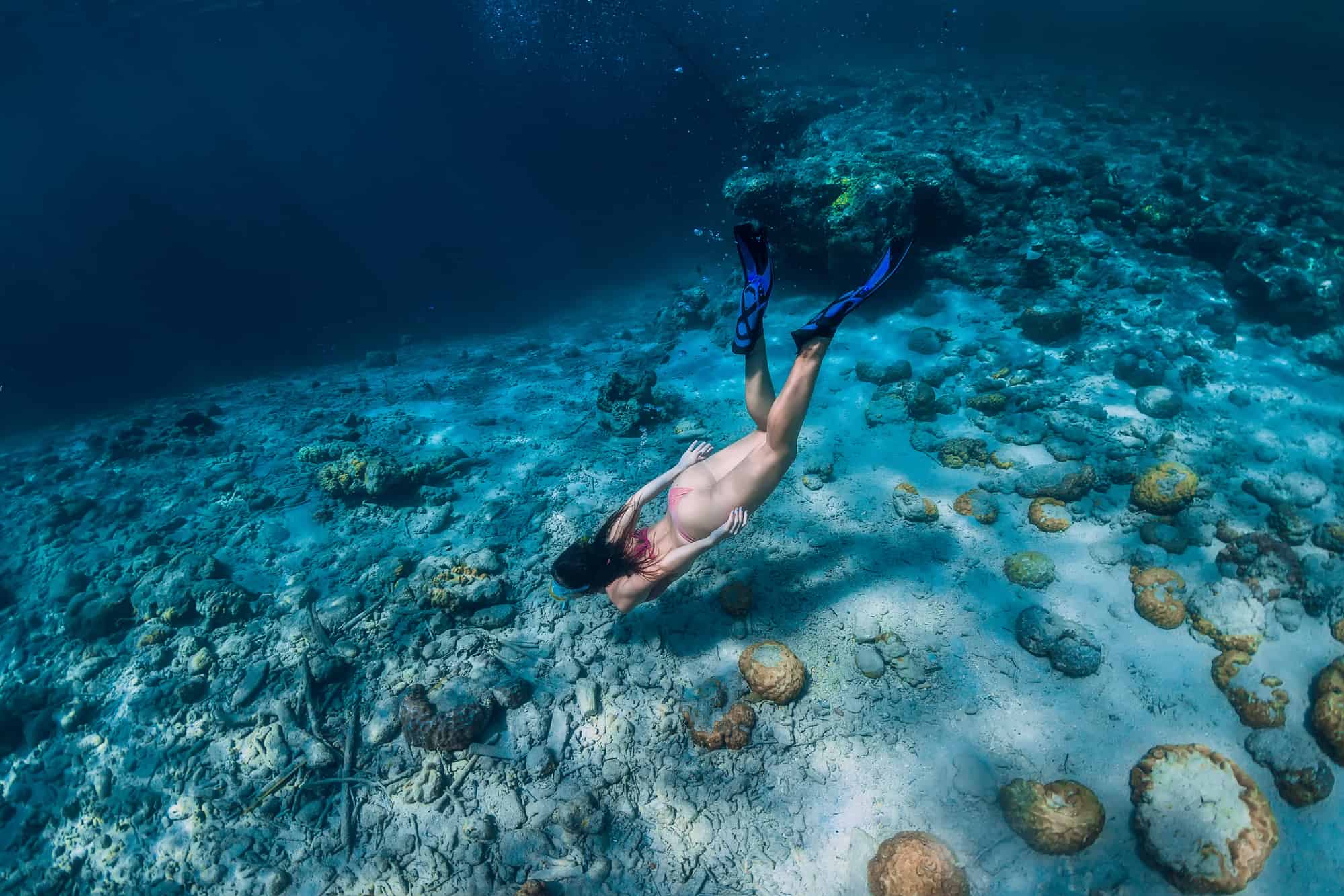
#5 Find a partner to dive together
It is best to take underwater photos together with your partner. If you want to take pictures deeper than three meters, you can’t do without spotlights. Underwater lighting equipment is massive and heavy, and also requires manual control. We advise you to work with another diver who controls the light underwater and helps you. You can also switch roles.#6 Want exclusive footage of underwater life? Move like a fish!
Underwater inhabitants are wary of creatures that approach them too quickly, have an unusual appearance, or look directly into their eyes. Try to match the movement and speed of the marine creatures so as not to scare your ‘models’ away.